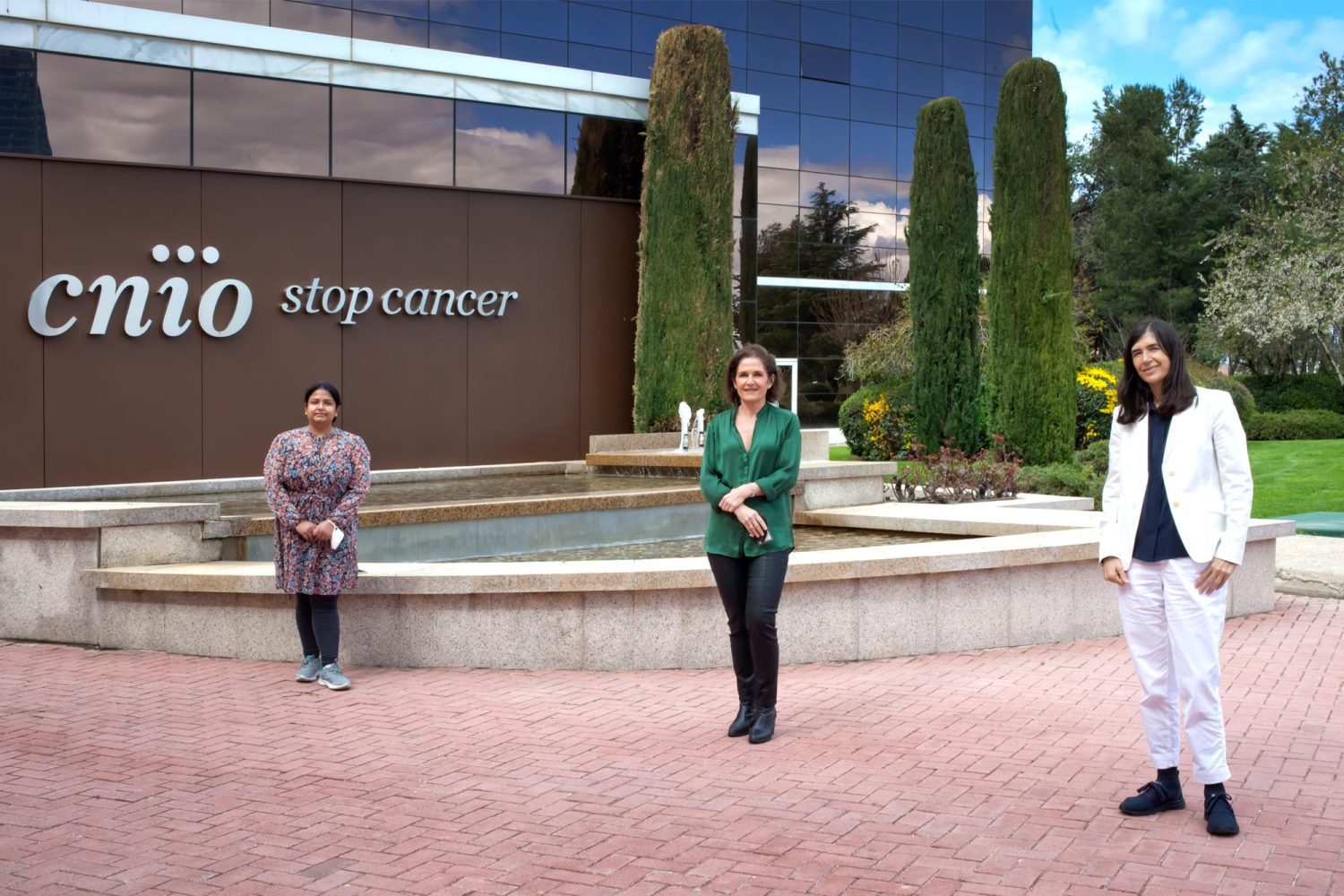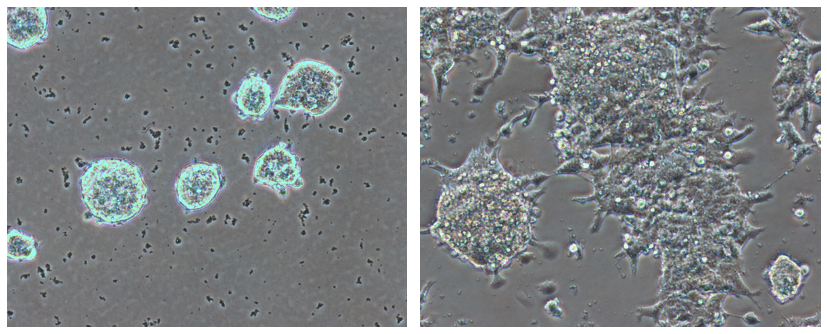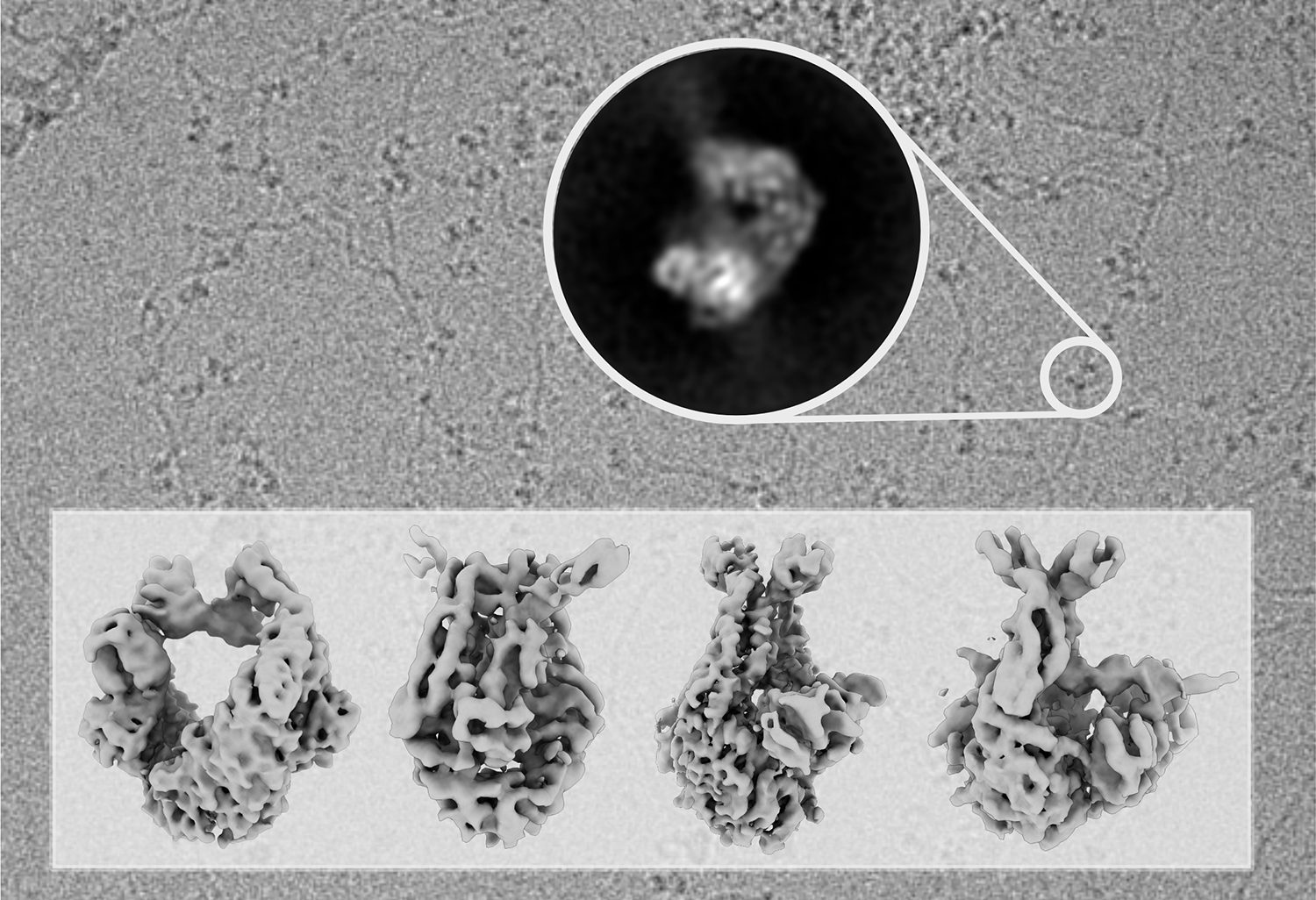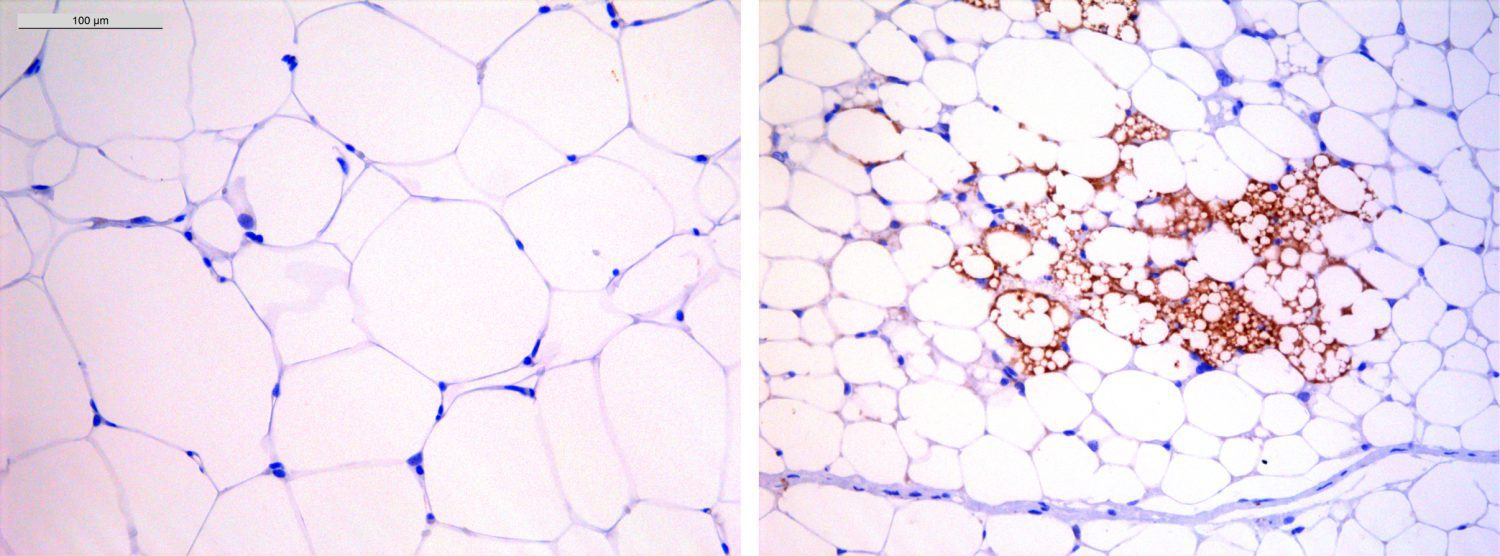This website uses cookies so that we can provide you with the best user experience possible. Cookie information is stored in your browser and performs functions such as recognising you when you return to our website and helping our team to understand which sections of the website you find most interesting and useful.
Column
Dear Friends,
In the last months, the CNIO has celebrated a host of new discoveries that we are confident will help advance the diagnosis and treatment of diseases such as cancer. These discoveries range from the most basic science that helps us understand the fundamental mechanisms behind the origin of diseases to new drug combinations that could improve patient response and survival. We are also especially proud of the high impact of the scientific journals in which these studies have been published, which demonstrates the quality science that our researchers are conducting and its impact on achieving a healthier and better society.
Support for the CNIO’s research projects is essential to guarantee their continuity and stability, and this requires the involvement of as many public and private stakeholders as possible and of society itself. That is why your support to CNIO Friends is so important. In this regard, we want to thank the Humanismo y Ciencia Foundation for becoming a member of our initiative by funding one of our ‘CNIO Friends’ postdoctoral contracts.
On March 8, we celebrated International Women’s Day with a dialogue between Mary Beard, Professor of Classics at the University of Cambridge and Princess of Asturias Laureate, Susana Torres, Professor of Humanities at IE University, and myself. During this colloquium, organised by the CNIO, the British Embassy and IE University, we called on all social organisations to make a greater commitment to women in decision-making positions in all areas. All economic sectors, including science, will be strengthened if they incorporate women’s vision into leadership positions.
We are very proud of the CNIO’s institutional and scientific achievements, and I hope you will enjoy reading about our exciting discoveries in this newsletter.
Maria A. Blasco
Director
Meet the CNIO Friends researchers
Magdalena Leal
We introduce you the first of our new cohort of CNIO Friends Post-Doctoral Research Fellows, whose contracts are financed 100% by your generous donations. Magdalena Leal joined the Melanoma Group that is led by Marisol Soengas at the CNIO in January 2021, on a two-year CNIO Friends contract generously financed by the Humanismo y Ciencia Foundation to carry out a project on preclinical models of cancer research.
Magdalena has a Master’s degree in Physiology and Neuroscience and a PhD in Molecular Biology. Her previous work was at CABIMER, the Andalusian Center for Molecular Biology and Regenerative Medicine in Seville. At the CNIO, Magdalena’s work studies how melanoma ‘acts at a distance’ before metastasis and evades the immune system in different anatomical structures, with a particular emphasis on the role of MIDKINE in different cell populations of the bone marrow.
We asked Magdalena what attracted her to cancer research, and why she felt the CNIO was the best place for her work. Magdalena explained, “I have always worked on the immune system, previously in neurodegenerative diseases. I decided to change my focus to immunology within cancer, because I am fascinated by how the immune system responds to this disease. Why does the immune system first attack the tumour and then favour its progression? I am excited about my work in this space, because what is happening in the tumour microenvironment is very complex, and if we can understand what is happening there, that will help us to work with all kinds of different diseases.”
“I was attracted to the CNIO because of the excellent environment it provides, both in terms of the tools available to study immunology in cancer and the many exceptionally bright minds working in this area at the Centre. I am very grateful to the Humanismo y Ciencia Foundation for their generous donation to support cancer research via the CNIO Friends program and for enabling new developments in this exciting area.”
CNIO Science News
 When TRF1 is phosphorylated by AKT, telomeres are normal (top); in the cell lines where AKT doesn't modify TRF1, telomeres are shorter and have a lower potential to generate tumours (bottom). /PLOS Genetics
When TRF1 is phosphorylated by AKT, telomeres are normal (top); in the cell lines where AKT doesn't modify TRF1, telomeres are shorter and have a lower potential to generate tumours (bottom). /PLOS Genetics
A team of the Telomeres and Telomerase Group led by Maria A. Blasco at the CNIO has discovered how the participation of telomeres in tumour generation is regulated by the protein TRF1. Disrupting this process may interfere with the immortality of cancer.
 From left to right, Sarita Saraswati, Paula Martínez and Maria A. Blasco. /CNIO
From left to right, Sarita Saraswati, Paula Martínez and Maria A. Blasco. /CNIO
Another team of the Telomeres and Telomerase Group opened the door to the treatment of renal fibrosis by demonstrating that it is caused by telomere shortening. The first author of the study is Sarita Saraswati, a beneficiary of a CNIO Friends contract thanks to the solidarity of our donor community.
 Embryonic stem cells, in naïve state (left) and primed state (right). /CNIO
Embryonic stem cells, in naïve state (left) and primed state (right). /CNIO
A team led by Javier Muñoz of the Proteomics Core Unit has described the molecular mechanisms that maintain embryonic stem cells in their optimal (naïve) state so that they can be used in regenerative medicine.
 The background of the illustration is a photograph taken with the electron microscope showing DNA molecules decorated with MutS molecules, scanning the DNA for errors. The lower part shows the MutS structures at different stages of the repair process resolved in this study. /CNIO
The background of the illustration is a photograph taken with the electron microscope showing DNA molecules decorated with MutS molecules, scanning the DNA for errors. The lower part shows the MutS structures at different stages of the repair process resolved in this study. /CNIO
An international study described how the MutS protein manages to repair the errors that can arise in DNA during cell division, which can lead to the appearance of tumours. The study was co-directed by Rafael Fernández-Leiro, Head of the Genome Integrity and Structural Biology Group, together with researchers from the Netherlands.
 The combination of temozolomide (TMZ) with dianhydrogalactitol (DAG; culture dish on the right) is able to kill glioblastoma cells resistant to conventional therapy with temozolomide alone (TMZ; centre). /CNIO
The combination of temozolomide (TMZ) with dianhydrogalactitol (DAG; culture dish on the right) is able to kill glioblastoma cells resistant to conventional therapy with temozolomide alone (TMZ; centre). /CNIO
A team led by Massimo Squatrito, Head of the Seve Ballesteros Foundation Brain Tumour Group, has discovered a combination of two drugs that could improve the survival of patients with glioblastoma, the most frequent and aggressive brain tumour.
 TOP2A relieves negative supercoiling at gene promoters, resulting thus in an increase in the number of twists of the DNA strands. This is an obstacle to the continuous opening of the helix that prevents the advance RNA polymerase, remaining in a poised state ready to trigger gene expression as soon as needed. /CNIO
TOP2A relieves negative supercoiling at gene promoters, resulting thus in an increase in the number of twists of the DNA strands. This is an obstacle to the continuous opening of the helix that prevents the advance RNA polymerase, remaining in a poised state ready to trigger gene expression as soon as needed. /CNIO
A team led by Felipe Cortés, Head of the Topology and DNA Breaks Group, has discovered that the structure of DNA itself actively participates in gene regulation and could be involved in tumour processes.
 Visualization of adipocytes from an obese mouse (left) and from a lean mouse treated with digoxin (right), showing a better response to nutrient excess and burning of fat. /CNIO
Visualization of adipocytes from an obese mouse (left) and from a lean mouse treated with digoxin (right), showing a better response to nutrient excess and burning of fat. /CNIO
Nabil Djouder, Head of the Growth Factors, Nutrients and Cancer Group, has led a study that reveals that a drug already in use in humans corrects obesity in mice without side effects.
 Researchers Óscar Fernández-Capetillo (left) and Emilio Lecona (right). /CNIO
Researchers Óscar Fernández-Capetillo (left) and Emilio Lecona (right). /CNIO
Óscar Fernández-Capetillo, Head of the Genomic Instability Group, has led a team that discovered a new mechanism that explains the toxicity of USP7 inhibitors, currently under development for the treatment of cancer.
NUESTRO CENTRO
 Fiona Govan, Mary Beard, Maria Blasco and Susana Torres, in a moment of 'Women and Power'. /CNIO
Fiona Govan, Mary Beard, Maria Blasco and Susana Torres, in a moment of 'Women and Power'. /CNIO
On the occasion of International Women’s Day, the CNIO, IE University and the British Embassy organised a colloquium with three great leaders in their fields: Mary Beard, Professor of Classics at the University of Cambridge and Princess of Asturias Laureate, Susana Torres, Professor of Humanities at IE University, and Maria A. Blasco, Director of the CNIO.
During the colloquium, the participants stressed that, despite the progress made in the incorporation of women into different social spheres, there is still a long way to go to achieve true equality, and they outlined the challenges that remain.

We remind you that you have the opportunity to purchase original works of art by renowned artists: Carmen Calvo, Chema Madoz and Eva Lootz have created, exclusively for our CNIO Arte project, excellent works of art inspired by the scientific work of Juan Luis Arsuaga in palaeoanthropology, Ignacio Cirac in quantum computing and Margarita Salas in molecular biology.
Moreover, the profits obtained from their sale will go directly to cancer research at our Centre through CNIO Friends.
If you would like to find out how to purchase any of these works, please write to cnioysociedad@cnio.es
INTERVIEW
Rafael Fernández-Leiro: “It will now be possible to explore new therapeutic strategies for diseases such as Lynch syndrome and endometrial cancer”

We talked with Rafael Fernández-Leiro, who has participated in the international study that unveiled how a protein known as the ‘guardian’ of the genome works.
What is MutS, and why is it called the ‘guardian’ of the genome?
The human genome has more than 3 billion base pairs of DNA, which are duplicated every time a cell divides to transfer genetic information to new cells. This process is constantly occurring in our body, is highly accurate and is carried out by molecular machines, proteins that read and copy all the letters of our genome with extreme care. They can also correct mistakes, removing a wrong base and replacing it with the correct one. But they can also make mistakes, which we know as mutations. Many of these mutations have no consequences and go unnoticed, but their accumulation affects different cell functions. This accumulation allows some cells to escape from cellular controls and grow uncontrollably, giving rise to tumours.
To prevent such an accumulation of mutations as a result of DNA copying, the cell has a “proofreading” system that is in charge of finding and correcting mutations that have escaped the control systems. This critical process for cell viability is undertaken by the MutS protein, the “guardian” of the genome.
What has your work achieved?
The MutS protein scans the copied DNA for errors and then starts and finishes repairing any errors it detects. But until now, it was not clear how a single protein could coordinate so many different processes. In this study, carried out in collaboration with Meindert Lamers of Leiden University Medical Center (LUMC, The Netherlands) and Titia Sixma of the Netherlands Cancer Institute, we used one of the most advanced technologies, called cryo-electron microscopy, which allowed us to observe the protein as it carries out its functions and capture how its molecular structure changes during its different activities. This is essential to understand how it works and how it can malfunction and give rise to cancer.
How will your study help to treat cancer?
We now understand how this protein can coordinate the entire DNA repair process. As I said, in-depth knowledge of these dynamics is essential to understand how alterations in these proteins lead to mutations and, therefore, to an increased risk of developing certain types of tumour, such as Lynch syndrome and endometrial cancer.
This new knowledge of the mechanisms of action of these molecular machines will allow us to explore new therapeutic strategies for these tumours.
PROFILE
Titia Sixma

Titia Sixma is Head of the Division of Biochemistry at the Netherlands Cancer Institute and affiliated professor at Erasmus MC. Using state-of-the-art microscopic technologies, she focuses on understanding how proteins work and how they relate to each other.
Her team is interested in the signalling processes that regulate DNA repair, the dysfunction of which has been linked to cancer. Understanding these processes in depth will be of great value in designing more effective drugs against tumours. Last March 12, the researcher visited our ‘Distinguished Seminars’ series to give a talk to our researchers on the subject.
Sixma is also a co-corresponding author of the international study in which Rafael Fernández-Leiro described how the MutS protein manages to repair the errors that can occur in DNA during cell division, in collaboration with the scientist Meindert Lamers, from the Leiden University Medical Centre (The Netherlands).
She received her PhD in Groningen with Wim Hol and did her post-doc with Paul Sigler at Yale. She is a member of EMBO (2004), Academia Europaea (2008) and the Netherlands Academy KNAW. She received the NVBMB prize, an ERC advanced grant, and several TOP research grants and is a member of the Oncode Institute.
Distinguished Seminars
26.02.2021
Raúl Rabadán
Columbia University (United States)
'A Topological Data Analysis perspective on coronavirus evolution'
05.03.2021
Lluis Fajas
Center for Integrative Genomics (Switzerland)
'The CDK4 revolution: The fight against hunger'
12.03.2021
Titia Sixma
The Netherlands Cancer Institute
'DUB gymnastics: allosteric regulation of DUBs in DNA regulation'
